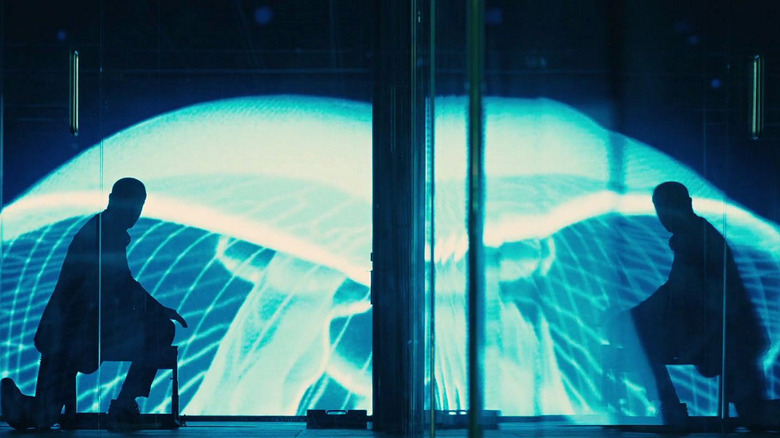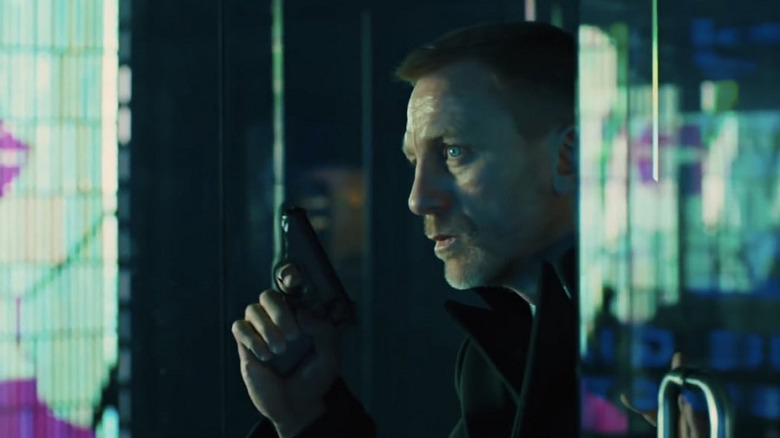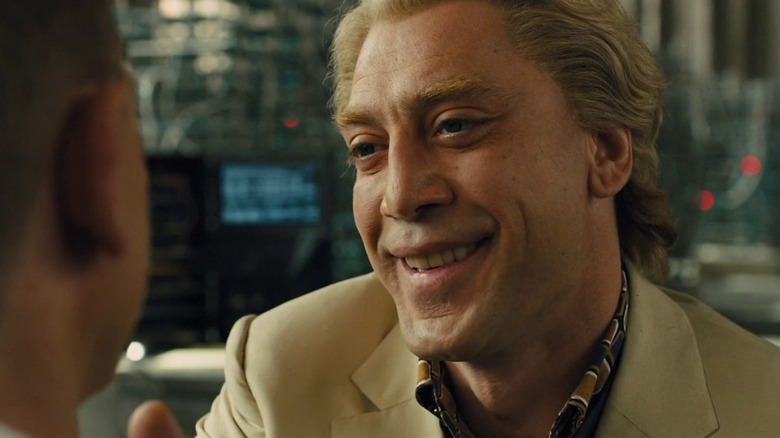How The Fantastic Shanghai Fight Scene In Skyfall Came Together
It's the 10th anniversary of the best post-2000 Bond movie (my condolences to "Casino Royale" fans, but it's the truth). Sam Mendes' 2012 spy film "Skyfall" is the twenty-third in the long-running series of James Bond movies, an atmospheric masterwork that features Daniel Craig's third performance as the fictional MI6 agent.
"Skyfall" sees Bond re-entering into MI6 service after his assumed shooting death and taking on a mission which sends him to the brave new world of Shanghai in pursuit of a mercenary known as Patrice (Ola Rapace), the man for whom the bullet that wounded Bond was intended for. Bond is tasked by his MI6 superior M (Judi Dench) to find Patrice, the sensitive hard drive he holds, and information about his mysterious employer. The ensuing confrontation is gorgeously lit and impeccably shot under the supreme lens of cinematographer Roger Deakins (who also happened to photograph the greatest post-2000 western, to boot); the two men fight in silhouette, backlit by LED panels of bright, glowing jellyfish, and few words are exchanged – not what one expects from a fight scene, but the result is breathtaking. See the clip here:
Sam Mendes' thorough director DVD commentary provides detailed insight on how the incredible sequence came to fruition. He was reluctant to itemize each creative choice, saying in the commentary:
"No one knows exactly how many of the tricks to give away in these commentaries, you don't want to de-mystify the entire thing."
But in the play-by-play of the moody Shanghai sequence, the "Road To Perdition" director's explanations are fascinating, including a fun anecdote about the perils of shooting a scene set in a room full of smudge-free glass panes.
You Only Live Twice (and you've already been shot once)
"I wanted it to be wordless," Mendes says of the scene, which delivers its information largely without dialogue. To the unsettling tunes of Thomas Newman's "brilliant" score, Bond pursues his lead Patrice to a Shanghai high-rise, where the mercenary has a target of his own in an office building opposite. Both settings and the action therein were too dangerous to shoot on location and so they were constructed, first in miniature and then on the million-dollar Albert R. Broccoli 007 Stage in England's famous Pinewood Studios.
The fight scene proper begins with Bond leaping onto the underside of an elevator shaft as Patrice ascends the 79 or so stories. Mendes explains:
"We built four stories of an elevator shaft, because it was too dangerous to do on location. Daniel leapt up and grabbed hold of the underside of the elevator, and then these tighter shots of Daniel and Patrice moving, we shot live. One of the great things that visual effects department [supervisor] Steve Begg did here was create a sense of the city that you can see outside the windows as they ascend in as natural a way as possible. By that I mean, you don't have that thing of it being in sharp focus as sometimes happens with a visual effect."
After their respective dismounts, Bond follows his target throughout the floor, a labyrinth of floor-to-ceiling glass panes, a more posh version of a hall of mirrors. Mendes relates:
"[Pinewood] is the most difficult set to work on because people kept walking into panes of glass, not surprisingly. If there was not a reflection on the glass ,lots of people would walk into it, including myself. Luckily there were no serious injuries, but a lot of bruised heads."
To strive, to seek, to find, and not to yield.
The scene continues, with Bond moving towards his lead as stealthily as one can in a transparent room. If it seems like a nightmare to shoot because of the reflections, it was. "We did a lot of coverage," the director says, "because we couldn't quite anticipate the way the reflections were going to behave." Mendes credits editor Stuart Baird for crafting a tense lead-up to the fight, as the glass had the tendency to make everything look too dreamy for Bond. Then, Patrice cuts a window hole and proceeds to assassinate a man in the building opposite. Fun fact: the painting the man is looking at before he dies is Amedeo Modigliani's "Woman with a Fan"(1919), a painting actually stolen from Paris' Museum of Modern Art in 2010 (Mendes surmises that the thief might be listening to the commentary, and urges them to "give it back").
Bond is seen, and a fight to the death ensues. Mendes was "very keen" to shoot in a stylized way, "by which I mean not in cuts." He opts for a slow push-in of the men in silhouette, only illuminated by the odd muzzle flash as they wrestle over a weapon. Under the percussive score of Thomas Newman, the tension reaches peak levels as Bond fights for his life. For this, Daniel Craig was trained by legendary martial arts coordinator and performer Roger Yuan, who told Gear Patrol that he trained the actor to fight as he portrays his Bond: a street fighting man who throws punches like a boxer and "isn't attuned to any one style."
It's not hard to guess who comes out on top of this battle in a Bond movie, but cyberterrorist Raoul Silva (Javier Bardem) might yet win the war.


